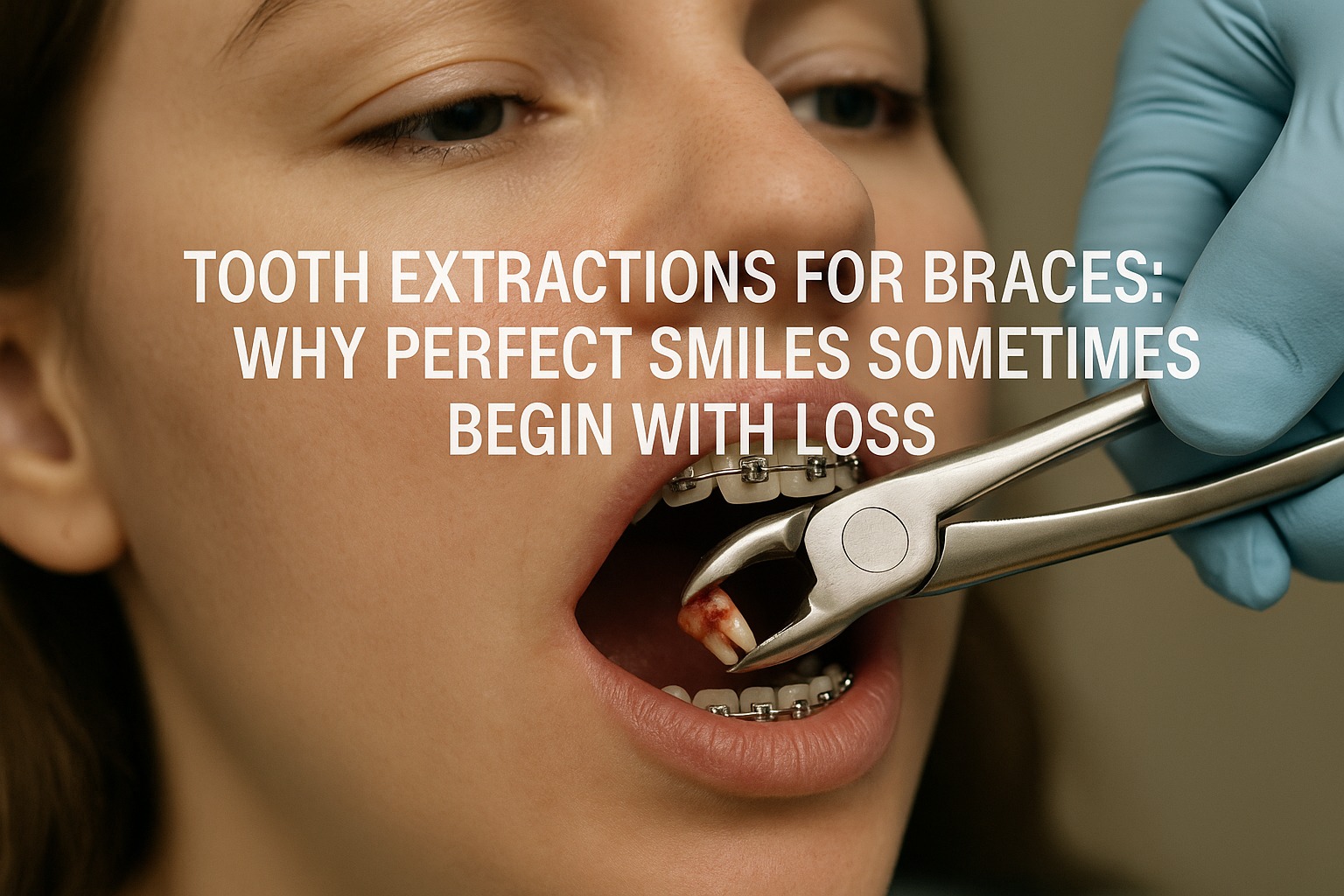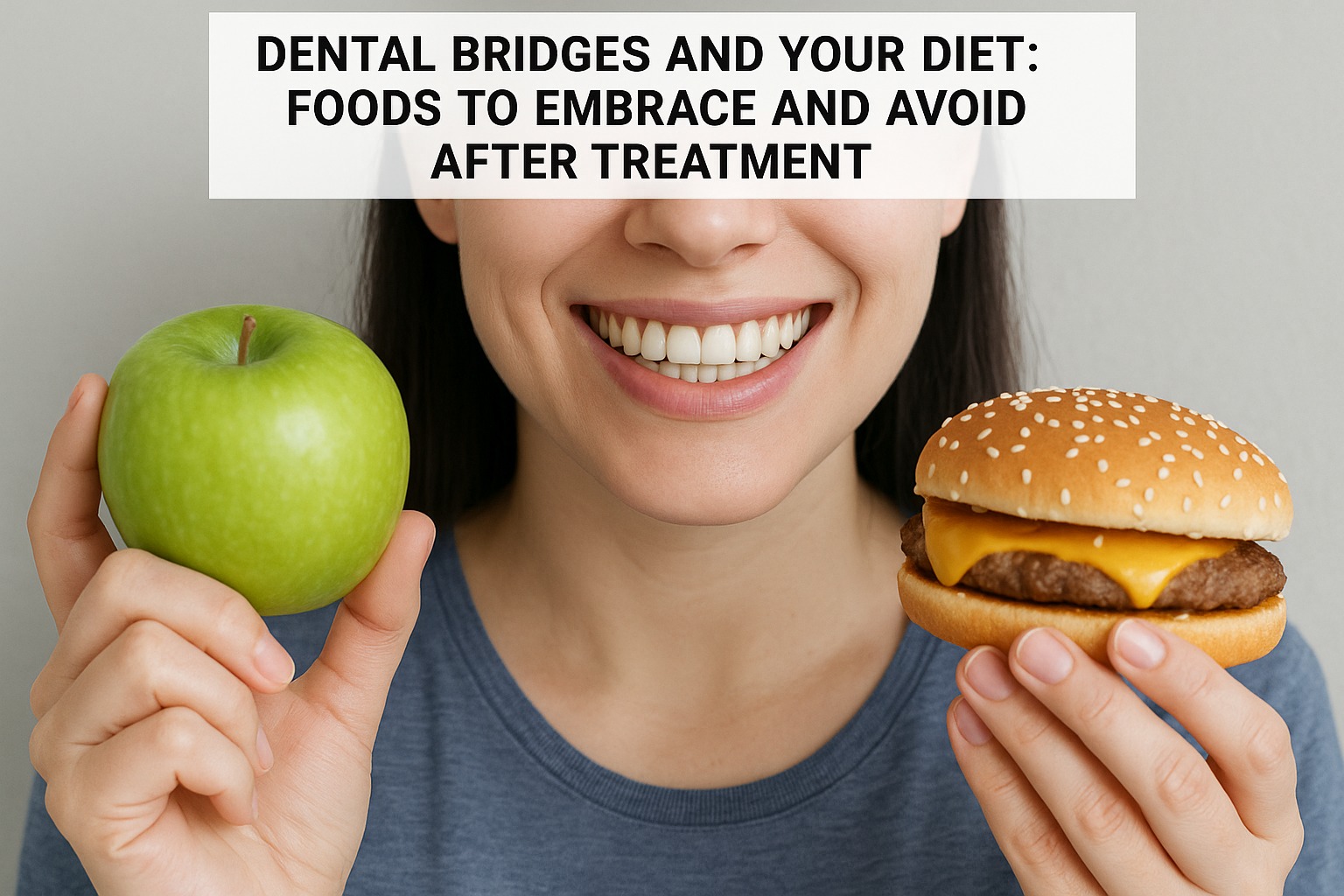When most people think about getting braces, they picture straight teeth, colorful bands, and a confident new smile. What they often don’t expect is that sometimes, the journey to a perfectly aligned smile starts with something that feels like a step backward—a tooth extraction.
At The Dental Place, we understand that hearing “you need a tooth pulled before braces” can sound intimidating. But rest assured: extractions are a common and carefully considered part of orthodontic treatment for many patients. In this article, we’ll explain why tooth extractions are sometimes necessary, what the process involves, and how it benefits your smile in the long run.
Why Do Orthodontists Recommend Tooth Extractions?
Tooth extractions for braces aren’t about losing something; they’re about creating space for the smile you’re aiming to build. Here’s why your orthodontist may recommend it:
-
Overcrowding
One of the most common reasons for extractions is overcrowding. When your jaw doesn’t have enough room for all your teeth to fit properly, they can grow in twisted, overlapped, or too close together. Removing one or more teeth gives braces the room they need to shift everything into perfect alignment.
-
Protrusion
If your front teeth stick out significantly (often called an “overjet”), removing a tooth on either side can help pull them back into a straighter, more secure position. This not only improves your appearance but also reduces your risk of injury, since protruding teeth are more vulnerable to trauma.
-
Bite Correction
To properly align your bite—how your upper and lower teeth come together—orthodontists sometimes need to remove teeth to shift your dental arches into harmony. Whether it’s an overbite, underbite, or crossbite, extractions can give braces the room they need to guide your bite into a healthier position.
-
Impacted Teeth
When a tooth can’t erupt properly because there’s no space (as is often the case with wisdom teeth or crowded canines), removing a neighboring tooth may be the only way to make room for guided eruption or implant placement later on.
How the Extraction Process Works
Tooth extractions before braces are usually done by a general dentist or oral surgeon and are often straightforward procedures, especially if the tooth is fully erupted. Here’s what to expect:
- Consultation & X-rays: We’ll assess your overall dental structure to decide which teeth, if any, should be extracted.
- Local Anesthesia: The area will be numbed, so you’ll feel pressure but no pain.
- Extraction: The tooth is gently loosened and removed. Most extractions take under 30 minutes.
- Recovery: You’ll be given post-op instructions for a smooth recovery, including what to eat, how to keep the area clean, and when to start your braces journey.
Most patients recover from simple extractions within a few days. After healing, your orthodontist will proceed with fitting braces—sometimes just a few weeks later.
Diet and Care After Extractions
Following a tooth extraction, your mouth will need a little TLC. Stick to soft foods like:
- Mashed potatoes
- Smoothies
- Applesauce
- Scrambled eggs
- Yogurt
Avoid using straws, smoking, or eating crunchy/hard foods for at least a few days to prevent dry socket, a painful condition that occurs when the blood clot at the extraction site becomes dislodged.
Keep the area clean by gently rinsing with warm salt water and following any care instructions provided by our dental team.
The Long-Term Benefits of a Short-Term Loss
It’s completely natural to feel uneasy about losing a tooth—but in the case of orthodontics, it’s often a strategic move for better health and aesthetics. Here’s what you’ll gain:
- A straighter, more functional bite
- Improved facial symmetry
- Healthier gums (since properly spaced teeth are easier to clean)
- Reduced risk of tooth decay and gum disease
- A confident, balanced smile that lasts a lifetime
Think of the extraction as the first chapter in your smile transformation—a small sacrifice that lays the foundation for lasting results.
Why Trust The Dental Place?
At The Dental Place, we take a personalized approach to every smile journey. Our team collaborates closely with orthodontists to ensure that if extractions are part of your treatment plan, they’re done with comfort, safety, and long-term success in mind.
We’ll guide you every step of the way, from your initial consultation through recovery and beyond. Whether you’re a teen getting braces for the first time or an adult returning to orthodontic care, we’re here to make your path to a perfect smile as smooth as possible.
Ready to Begin Your Smile Journey?
Tooth extractions may sound like a setback, but in the world of orthodontics, they’re often a stepping stone toward your best smile. If our orthodontist has recommended extractions before braces, don’t worry—you’re in good hands at The Dental Place.
Contact us today to schedule a consultation and take the first confident step toward a straighter, healthier smile!


